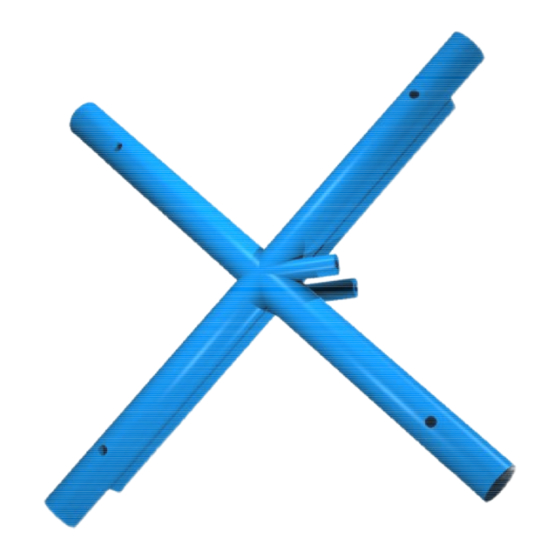
Table of Contents
Advertisement
Quick Links
Advertisement
Table of Contents

Summary of Contents for Titus AeroCross
-
Page 1: Application Guide
AG-AeroCross-00 March 4, 2002 Application Guide Flow Sensor... -
Page 2: Table Of Contents
AG-AeroCross-00 March 4, 2002 Table of Contents Introduction Description Performance Amplification Multi-point Center Averaging Inlet Sensitivity Sound Performance K-factors Suggested Specifications... -
Page 3: Introduction
To visibly differentiate the new sensor, the AeroCrossä will be blue. The flow label on the terminal will also be blue to allow for easy identification from the outside of the unit. Like the original Titus flow sensor, the AeroCrossä is injection molded out of a high impact plastic material. -
Page 4: Multi-Point Center Averaging
The AeroCrossä sets the standard for amplification, with performance ranging from 1.7 to 2.9, depending upon the inlet size. Multi-point Center Averaging: Multi-point center averaging flow sensors are more accurate than linear averaging flow sensors. -
Page 5: Inlet Sensitivity
No controller, regardless of its sophistication, can overcome less than adequate accuracy from a flow sensor under common field conditions. The AeroCrossä has less inlet sensitivity than any flow probe on the market, with no more than +/- 5% error regardless of inlet condition. While other center-averaging designs are capable of +/-10% error, linear averaging designs can range from +/-10% to 35% depending upon the exact condition and angle of approach. -
Page 6: K-Factors
As you can see from table 1, the sound reduction was significant in many sizes and cfm ranges. K-factors: The AeroCrossä sensor has different k-factors than the original sensor. Titus will provide the major controls companies with the new k-factors to update their software. Until the software updates are made, the control contractors will need to be aware of the new constants. -
Page 7: Suggested Specifications
AeroCrossä k-factors to the original sensor k-factors and shows the % difference in cfm reading between the two sensors. For example, if you replaced a size 8 original sensor with a size 8 AeroCrossä sensor, the same pressure reading would result in 2.6% lower cfm calculation in the controller, if the k-factor was not updated to the AeroCrossä...

Need help?
Do you have a question about the AeroCross and is the answer not in the manual?
Questions and answers